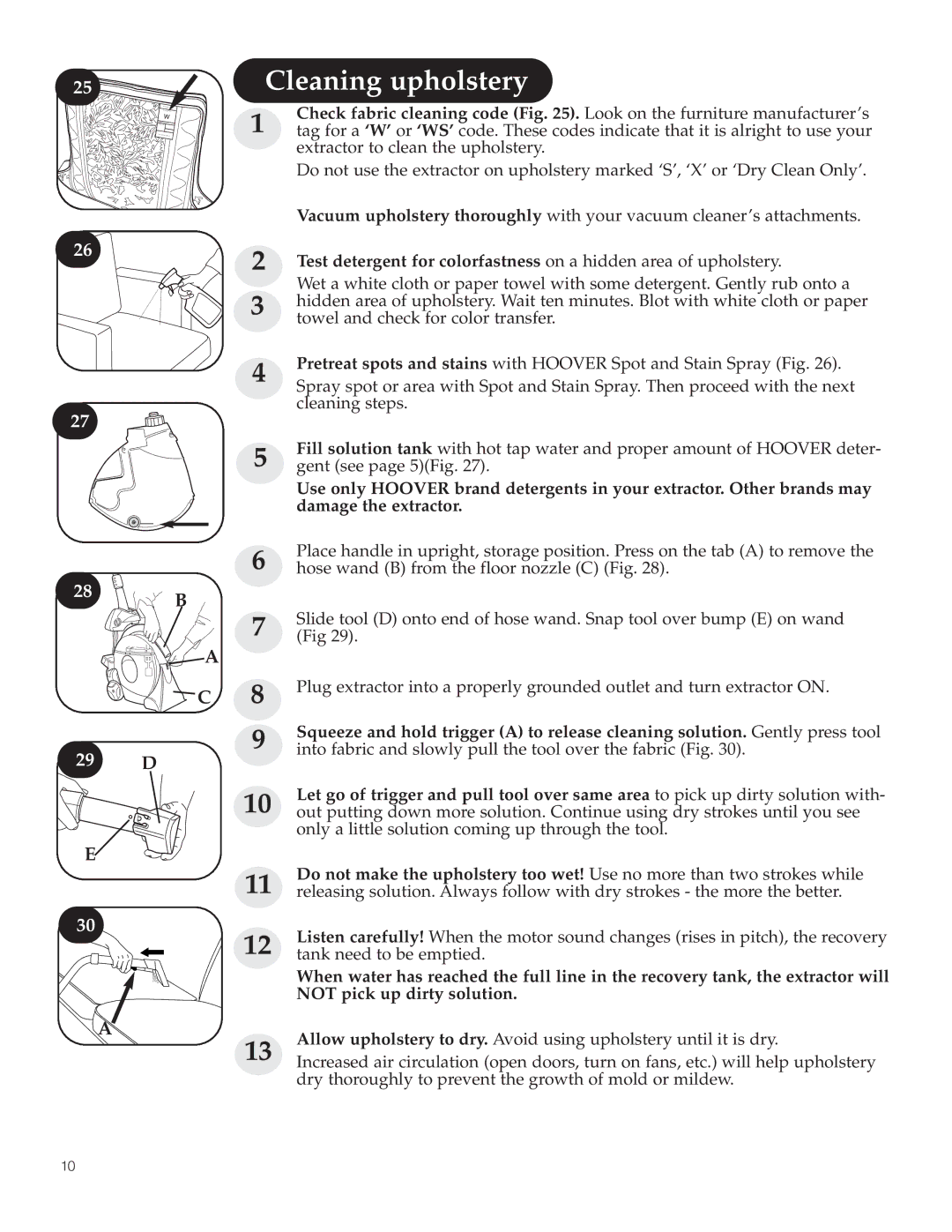
![]() 25
25![]()
![]()
![]()
![]()
26 | 2 | Test detergent for colorfastness on a hidden area of upholstery. |
| ||
| 3 | Wet a white cloth or paper towel with some detergent. Gently rub onto a |
| hidden area of upholstery. Wait ten minutes. Blot with white cloth or paper | |
| towel and check for color transfer. | |
|
|
27
28![]()
![]()
![]()
![]()
![]() B
B
|
| 7 | Slide tool (D) onto end of hose wand. Snap tool over bump (E) on wand |
| A | (Fig 29). | |
|
|
| |
| C | 8 | Plug extractor into a properly grounded outlet and turn extractor ON. |
|
| ||
|
| 9 | Squeeze and hold trigger (A) to release cleaning solution. Gently press tool |
29 | D | into fabric and slowly pull the tool over the fabric (Fig. 30). | |
|
| ||
|
| 10 | Let go of trigger and pull tool over same area to pick up dirty solution with- |
|
| out putting down more solution. Continue using dry strokes until you see | |
|
|
| only a little solution coming up through the tool. |
E |
|
| Do not make the upholstery too wet! Use no more than two strokes while |
|
| 11 | |
|
| releasing solution. Always follow with dry strokes - the more the better. |
30
A
12 | Listen carefully! When the motor sound changes (rises in pitch), the recovery |
tank need to be emptied. |
When water has reached the full line in the recovery tank, the extractor will NOT pick up dirty solution.
13 | Allow upholstery to dry. Avoid using upholstery until it is dry. |
Increased air circulation (open doors, turn on fans, etc.) will help upholstery |
dry thoroughly to prevent the growth of mold or mildew.
10
